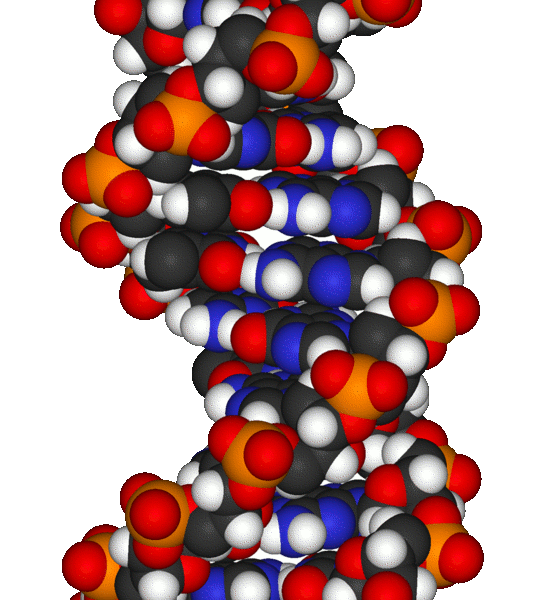In every cell in your body, proteins are seeking out the bit of DNA they need in order to keep the cell running - making new proteins, copying DNA, repairing damage. This means finding the exact DNA sequence amongst thousands.
 Several mechanisms have been put forward for this, and until now the best explanation has been something called Direct Readout - where the protein binds closely to the DNA strand. This has the effect of distorting the DNA, stretching it out of shape, rather like giving it a bear hug or painfully tight handshake. It also takes time, as binding to the DNA, distorting it and then dis-attaching will all need time to occur.
Several mechanisms have been put forward for this, and until now the best explanation has been something called Direct Readout - where the protein binds closely to the DNA strand. This has the effect of distorting the DNA, stretching it out of shape, rather like giving it a bear hug or painfully tight handshake. It also takes time, as binding to the DNA, distorting it and then dis-attaching will all need time to occur.
Now, Nancy Horton and colleagues at the University of Arizona have discovered that proteins may only need to lightly brush the DNA, giving it no more than a gentle squeeze to find their target site, speeding up the process without losing accuracy.
Publishing in the journal Structure, they examined a mechanism called indirect readout, where proteins have no physical contact with the DNA structure they are examining, yet are still able to locate their binding site. Not only does indirect readout avoid binding to the DNA molecule itself, but rather than distorting the DNA in a full bear hug, it merely squeezes the molecule gently, rather like trying to work out what your Christmas presents are without undoing the sellotape.
This was an unexpected discovery which resulted from studying how bacteria protect themselves from viruses - using a group of proteins called restriction endonucleases. These chop DNA at very specific sequences, allowing viral DNA to be chopped out of a bacterium. They also must work quickly to protect the bacterium from damage.As their job is to cut DNA up, they must be very specific for the virus sequence, otherwise they could greatly damage the bacterium by wantonly chopping up DNA. To see exactly how endonucleases find their site, Horton and co wanted to measure how much distortion a specific endonuclease, called Hincll, applied to the DNA strand. They compared it with a mutated form of hincll which was unable to bind to the DNA in the same way.
The results shocked them- despite not being able to bind to the DNA, the mutant hincll found it's site with no loss of specificity. Shutting down the pathway through which direct readout works did not hamper the activity, as indirect readout enabled the protein to work.
It seems that the quicker, non-distorting mechanism of indirect readout may act as a guide for direct readout proteins, but as this could have major implications for designer drugs."People have and are developing DNA-binding proteins to turn genes on and off" Horton said. This is the basis of some gene therapy, allowing us to replace bad genes with good. "We found that indirect readout is important for finding the right sequence, and we now think indirect readout is also important for finding it quickly."
- Previous Mind Reading a Reality?
- Next Apeing the way we see Faces










Comments
Add a comment